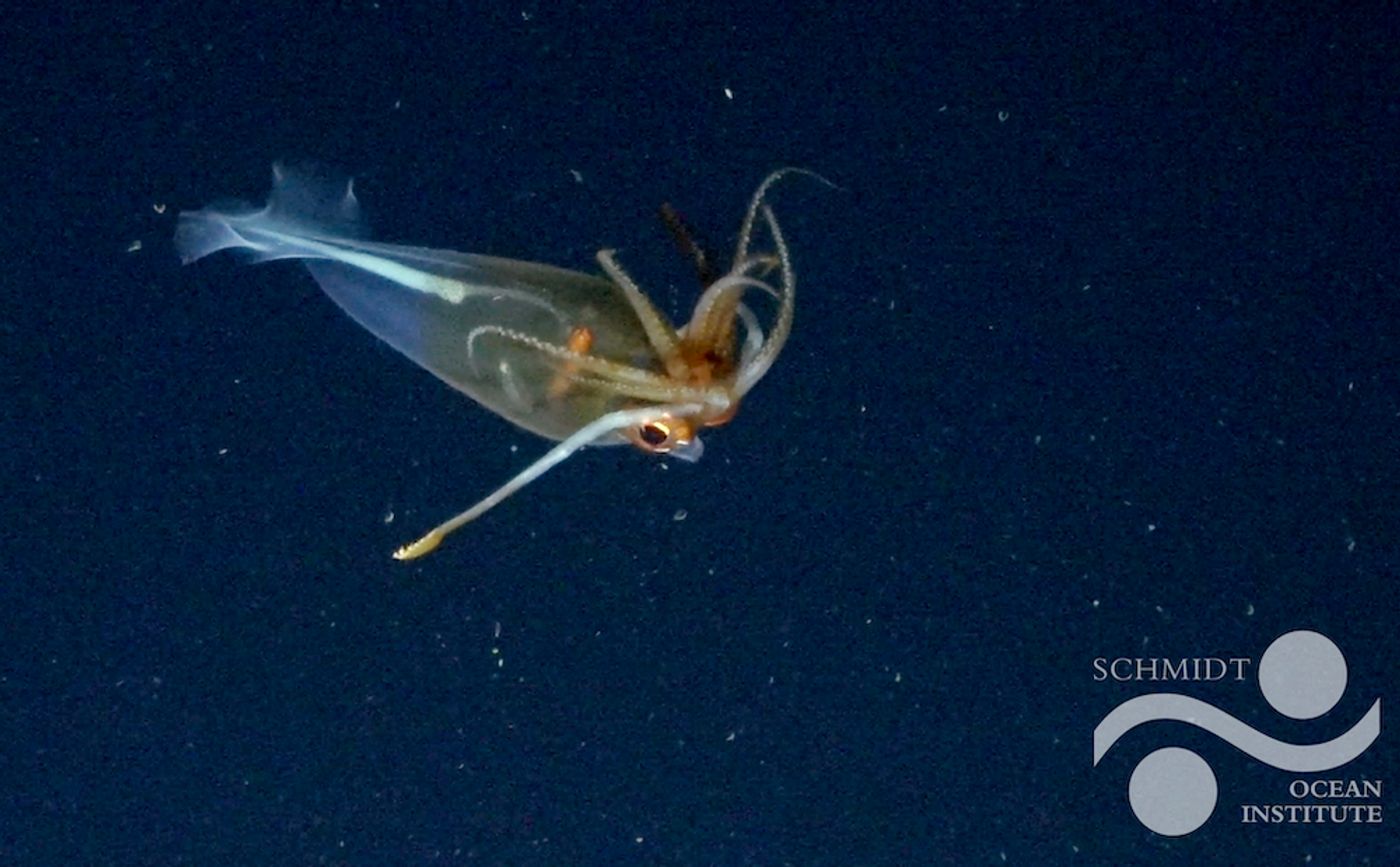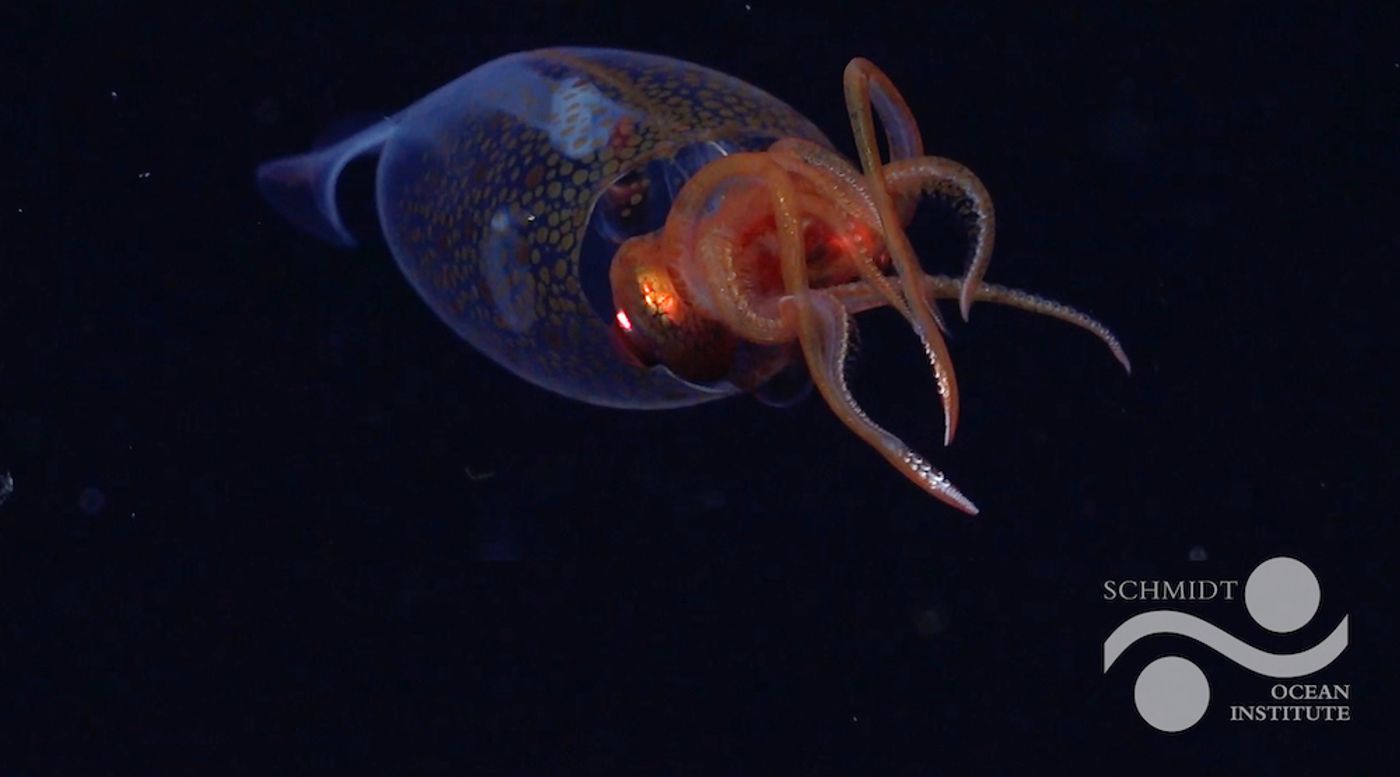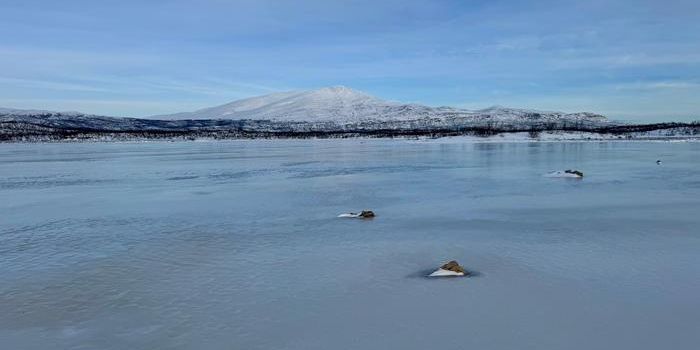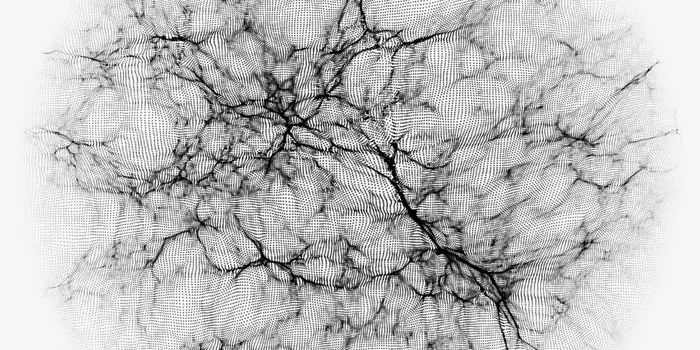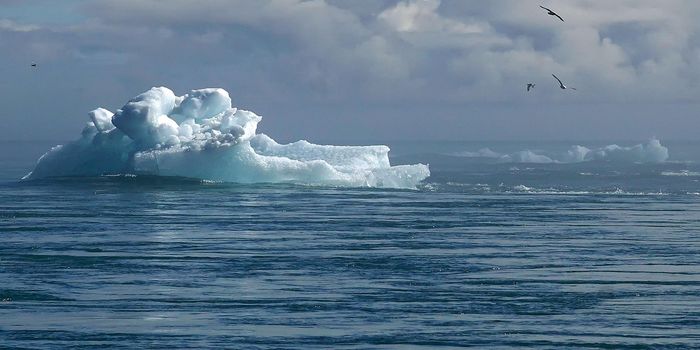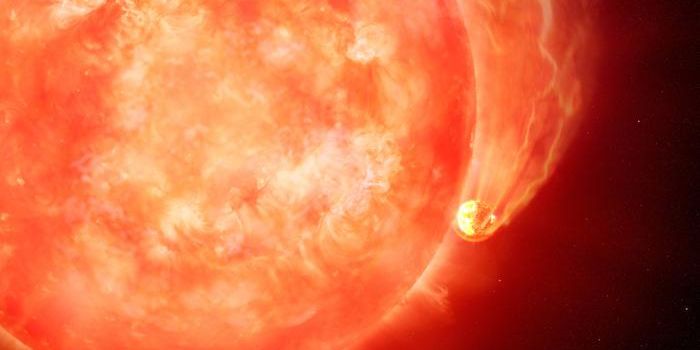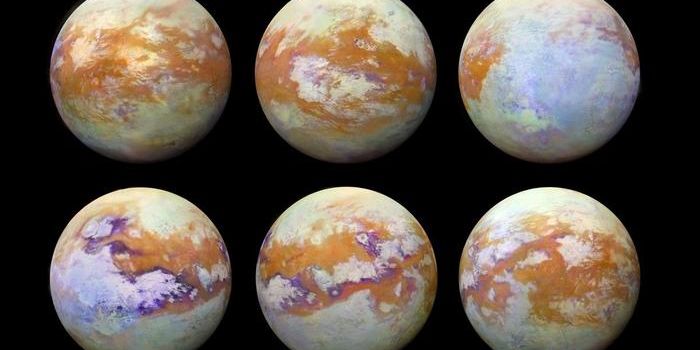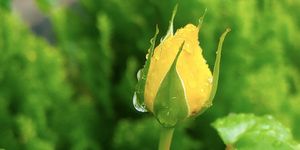In a First, a Baby Colossal Squid is Caught on Camera in Its Habitat
For the first time, scientists have captured footage of a colossal squid (Mesonychoteuthis hamiltoni) in its natural habitat. This particular colossal squid was only a juvenile, however. It measured about 30 centimeters, and was caught on video at 600 meters (1968 feet) below the surface near the South Sandwich Islands in the South Atlantic Ocean. The remotely operated vehicle (ROV) SuBastian, operated by a crew on the Schmidt Ocean Institute's research vessel Falkor (too), captured the footage on March 9 during a 35-day expedition.
This team also collected the first footage of a glacial glass squid (Galiteuthis glacialis) in its natural habitat on January 25, in the Southern Ocean near Antarctica. This animal was found at a depth of 687 meters (2254 feet).
When colossal squid are fully grown, they can grow to be seven meters (23 feet) long, and may weigh 500 kilograms (1,100 pounds). There is still much that is unknown about these creatures, such as the details of their life cycle. Though juveniles are known to be transparent, they lose that characteristic at some point.
Experts confirmed that it was a colossal squid on the footage. There are hooks around the middle of their eight arms, which G. glacialis does not have. The species have some similarities, however, such as hooks at the end of two long tentacles.
"It's exciting to see the first in situ footage of a juvenile colossal and humbling to think that they have no idea that humans exist," said Dr. Kat Bolstad of the Auckland University of Technology. "For 100 years, we have mainly encountered them as prey remains in whale and seabird stomachs and as predators of harvested toothfish."
"These unforgettable moments continue to remind us that the Ocean is brimming with mysteries yet to be solved," noted Dr. Jyotika Virmani, the executive director of the Schmidt Ocean Institute. "Fortunately, we caught enough high-resolution imagery of these creatures to allow the global experts, who were not on the vessel, to identify both species."
Source: Schmidt Ocean Institute
